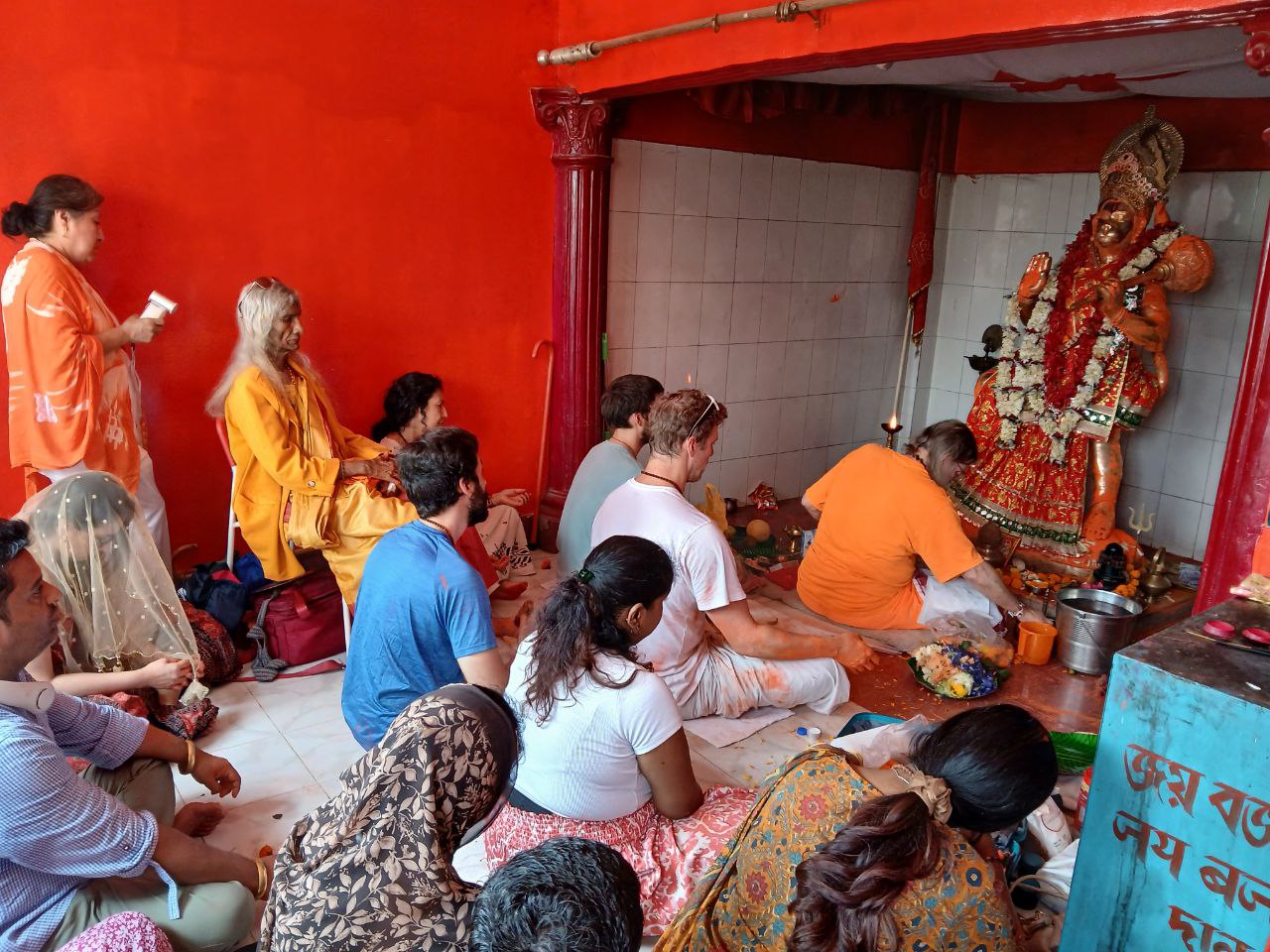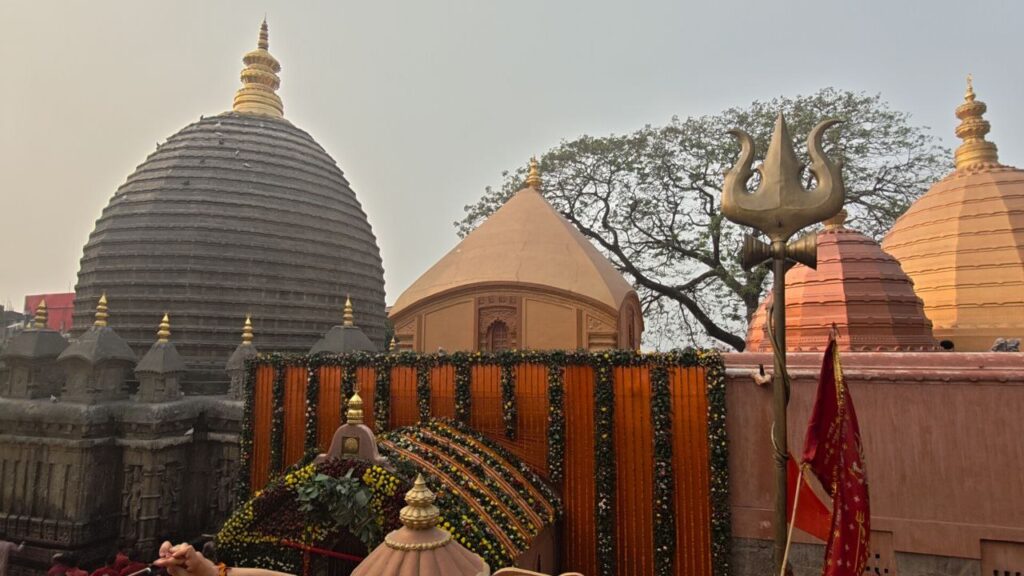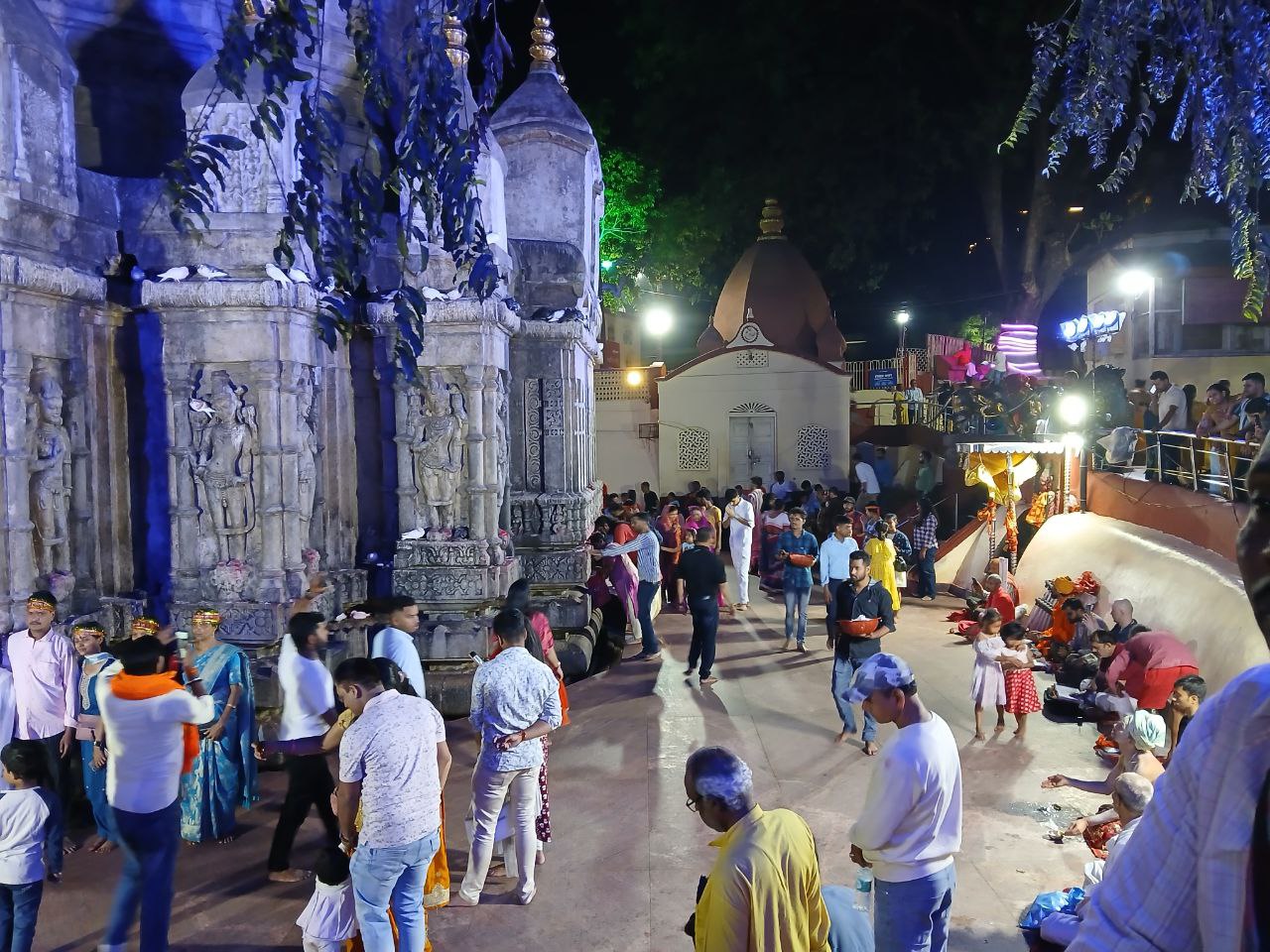
Kailash Brumwell
Swamiji Satyananda Saraswati
Devi Mandir
April 21, 2025
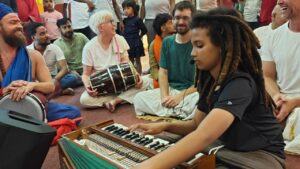
As the month of Chaitra moved farther from the future and closer to the present, so grew my excitement and anticipation. Here, the Divine Mother had laid out the opportunity of a lifetime, inviting me to celebrate Navaratri in one of the most venerated spiritual locations in the world, to dive headfirst into ancient Tantric practices and rituals! Even the thought that this was happening was surreal to me. The festival of Navaratri is said to transform forever the devotees who plunge themselves into devotion. I can affirm that, from my perspective, Navaratri was truly a transformative experience from beginning to end.
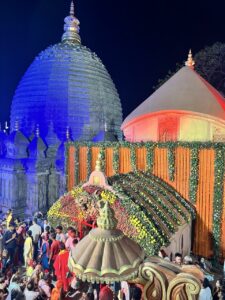
Navaratri is a nine-day celebration in praise of the Divine Mother. It takes place four
times a year, once in each season. Of these, the two main celebrations are known as Chaitra Navaratri (taking place around March-April) and Sharada Navaratri (taking place around September-October). I had the blessing of spending Chaitra Navaratri at Kamakhya Devalaya in Guwahati, Assam, one of the oldest Shakti Peethas and the cradle of Tantra itself. During this time, my mind stayed focused on the Divine day and night. The way of life known as Siddhantacharan describes the seven activities performed by one who devotes their life to God, as outlined in the Ramayana. During my time at Kamakhya, we were fully engaged every single day in all seven of the elements Siddhantacharan describes.
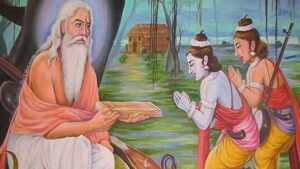
The first element of Siddhantacharan is Pūjā, which means worship. Each day of Navaratri, before the sun rose, even before anyone else was awake, Shree Maa did her own, private Śiva Pūjā in her hotel room. Additionally, on the last day of Navaratri, we performed a Kumārī Pūjā to a group of six young girls, in which I assumed the role of a pūjari, offering the very same articles of worship one would to a murti.
The second element of Siddhantacharan is Pāṭh, which means the recitation of scriptures. My experience at Kamakhya revolved primarily around performing Pāṭh. Each morning, our group woke up before the sun rose, entered the temple grounds, and took our place on a stone directly opposite the temple. From there, we recited the Chaṇḍī Pāṭh in its full entirety, complete with the Devi Kavacham, Argala Stotram, and Siddha Kunjika Stotram, among other stotrams.We spent considerable time each day at Kamakhya reciting the Chaṇḍī Pāṭh. In this way, the practice of recitation characterized much of the sadhana we did, and punctuated Navaratri as a whole.
The third element of Siddhantacharan is Homa, or sacred fire ceremony. The practice of Homa occupied a large portion of my experience at Navaratri. Every day, after breakfast, we walked to a Smashana Kali temple adjacent to a cremation ground, set up the homa in the havan kund, and recited the Samaṣṭi Chaṇḍī Bījamantrātmaka, or the Bīja mantras which correspond to each of the seven hundred verses of the Chaṇḍī. In addition, the day before Navaratri started, we performed a Shraddh ceremony to honor our ancestors and recently deceased relatives.
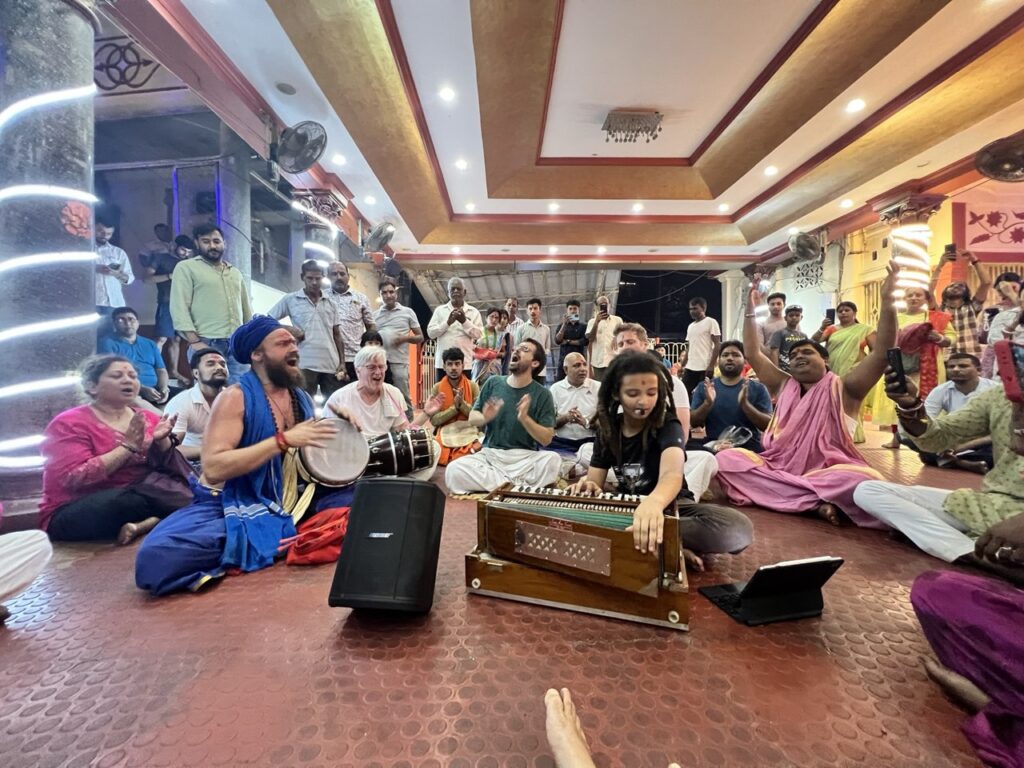
The fourth element of Siddhantacharan is Sangīta, which means singing for God. This is expressed in the practice of Aarti. Each night, we met in Shree Maa’s hotel room and did Aarti.Everyone in the room either sang the bhajans or picked up an instrument, such as a pair of kartaals, and played along.
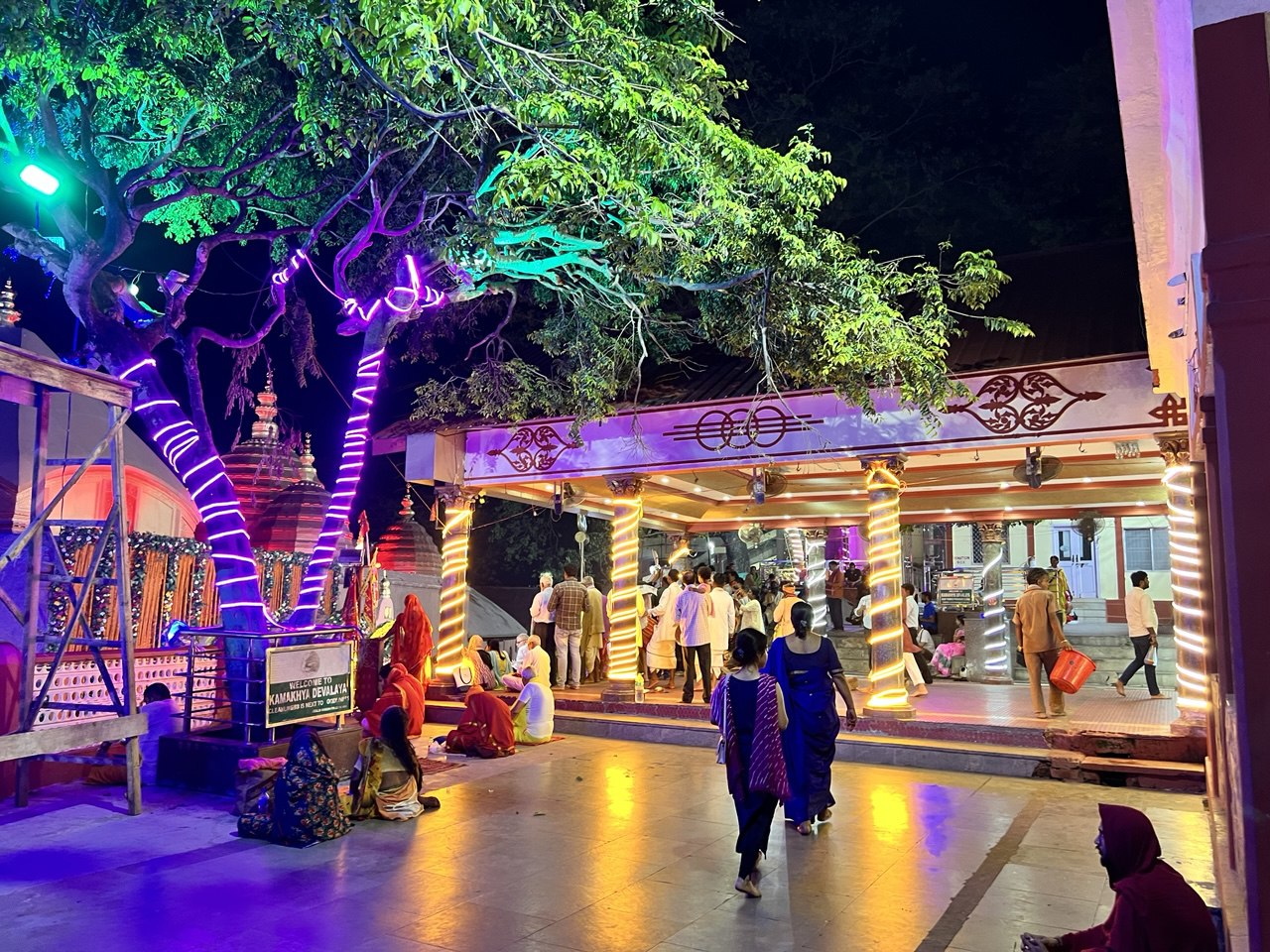
The fifth element of Siddhantacharan is Nṛta, which means dancing for God. This can also be included in Aarti. Everyone who sang along to the bhajans also clapped and danced, if not playing an instrument. Furthermore, after this initial Aarti, we all followed Shree Maa and Swamiji as they circumambulated the temple three times, taking part in the greater KamakhyaAarti, dancing joyously and crying out “Jai Maa!” to a set of drummers playing their rhythms.
The sixth element of Siddhantacharan is Pravachan, which means explanation. During theevenings before Aarti, Swamiji often expounded upon spiritual philosophies and practices, answering the questions of any devotee. These spiritual discussions were extremely illuminating, shedding light on many topics that had previously mystified me.
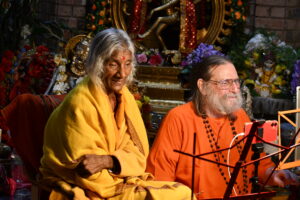 The seventh and final element of Siddhantacharan is Arpanam, which means the offering of service. Not only did I help by carrying homa offerings and other various equipment to and from the Smashana Kali temple, I also offered my service in other ways, such as providing music for the Aarti.
The seventh and final element of Siddhantacharan is Arpanam, which means the offering of service. Not only did I help by carrying homa offerings and other various equipment to and from the Smashana Kali temple, I also offered my service in other ways, such as providing music for the Aarti.
My time at Kamakhya was multifaceted. In addition to fulfilling these aspects of Siddhantacharan, in our free time away from Shree Maa and Swamiji, our group did sadhana at each of the Dasa Mahavidya
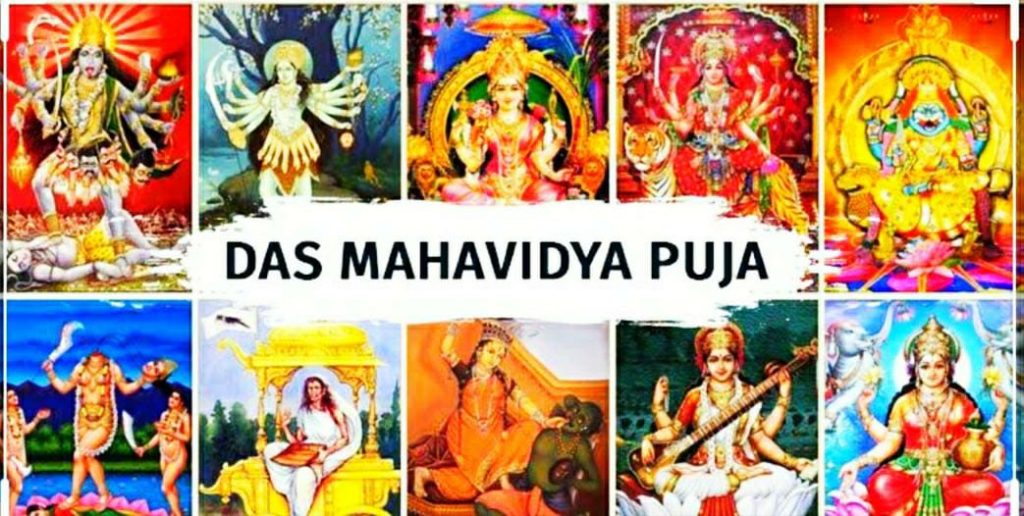 temples during the course of our stay. We also chanted in a Ganesh temple near the Brahmaputra River, as well as other temples in the Nilachal Hill complex. We even went into Guwahati to visit the Bhimashankar Jyotirlingam and the Sukreswar Shiva
temples during the course of our stay. We also chanted in a Ganesh temple near the Brahmaputra River, as well as other temples in the Nilachal Hill complex. We even went into Guwahati to visit the Bhimashankar Jyotirlingam and the Sukreswar Shiva
temple. We made it a priority to do our own sadhana, chanting and singing at the temples we visited. My experience at Navaratri was such a joyous one; I felt bliss existing in that environment, dedicating all my actions and thoughts to God, surrounded by other spiritual aspirants doing the same. By contrast, when I came back to the United States, my normal way of life seemed flat and mundane. The intense joy I found in celebration of the Divine Mother at Navaratri in Kamakhya was such that crashing back down to my old routine felt depressing.
Therefore, my goal now is to take a small part of Navaratri home with me, and to keep the sadhana and celebration alive. Looking back, Chaitra Navaratri at Kamakhya Devalaya was a uniquely blissful, transformative experience. It leaves me longing and praying to rejoice in that bliss once more

